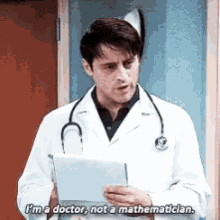"but shouldn't the SDs be worked in as part of a weight matrix."
Yes they should, and do. But does the matrix know to propagate as the angles accumulate?
Regardless, it doesn't solve the issue of the requirement to work with angles rather than directions.
Sent you a message with three pictures attached that might help. Since the three pages are copyrighted material, didn't want to drag Wendell's website into something troublesome.
Eric correctly points out:
Orienting each direction to a common starting azimuth doesn't change its individual a priori SD.
You will end up needing to combine the distance and angle observation equations to develop the Jacobian matrix and you will need to have the the weight matrix (weight - (1/SD)). There is a very good tabular layout suggested by Wolf and Ghilani's text to keep this all in order as it gets VERY dense very quickly. There is a typo in the pages I sent where the K matrix shows: 100.00-99.91 = 0.09 that should be 100.00-99.81 = 0.19
The simple method would be to start at the fixed points and use the measurements to create a coordinate for each shot, then develop a weighted mean coordinate for each point and work backwards to get the SDs from the data. Observation equations vs. Condition equations.
Thanks for all the help guys. I have since been told that the equation has been found.
As it turns out, the equation supplied by the teacher was the correct one, but was incomplete. The portion I was given only dealt with the unknown point problem in the equation. Here is the complete equation.
Thanks again for all your help!
Mick.
Sure! I had that right on the tip of my tongue, but couldn't spit it out in time.

Observation equations vs. Condition equations.
I don't know if the quote above was intended to suggest the process being discussed needs condition equations AND it has been way too long since I have done one of these long hand, so I may be mistaken in two instances. But, I don't think the method the professor is requiring needs/uses condition equations. The variation of coordinates uses the observation equations to develop the matrix that is reduced to find a recommended change in north and east coordinate value to minimize the errors in the system of equations. That recommended change is applied to the seed coordinates, replacing the first approximation of coordinate values and then the matrix math is repeated (rinse, lather, repeat, until the error values reach an accepted threshold). No need to include a condition as the results are based only on the observations and may or may not fit geometric "knowns" perfectly.
At least that is my recollection from a very long time ago when we would use a program called TK Solver to run the iterations. I think TK Solver is still around, but I am talking about when the same software company offered the (at the time) premiere spreadsheet software - Lotus 1-2-3 (not to be confused with the knockoff software "As Easy As..." which certainly made good use of an old saying).




